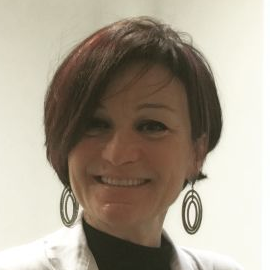Bioactive Glasses 2019
A special issue of Materials (ISSN 1996-1944). This special issue belongs to the section "Biomaterials".
Deadline for manuscript submissions: closed (31 December 2020) | Viewed by 18088
Special Issue Editor
Interests: biomaterials; bioceramics; bioglasses; metallic nanoparticles; drug delivery systems; synthesis (traditional, sol-gel and sono-gel); functional biomaterials; surface functionalization; biosensors; characterization (x-ray diffraction, electron microscopy)
Special Issues, Collections and Topics in MDPI journals
Special Issue Information
Dear Colleagues,
Bioactive glasses are a group of surface-reactive, glass–ceramic biomaterials; bioactive glasses bond to tissues and are biocompatible. They have a wide range of applications due to their versatile properties, which can be properly designed depending on their composition. A significant improvement in the prevision of glass bioactivity derives from the opportunity to establish relationships between structure and properties by making a combined use of theoretical and experimental techniques. Consequently, bioactive glass science and technology continues to be at the forefront of providing innovative approaches to medicine. The focus of the “Bioactive glasses 2018” Special Issue is to provide and comprehend important topics: Synthesis, design, development and applications of bioglasses. Some interesting topics (among others, and not limited to) are: Bioderived bioglasses with functionalized nanostructures, encapsulation and adsorption of biomolecules in the surface of bioglasses and interactions with the host matrix, molecular dynamics simulation applied at the atomic level regarding the bulk and surface structures of the glasses. With immense pleasure, we invite you to submit a manuscript for this Special Issue. Full papers, communications, and reviews are welcome.
Prof. Dr. Gigliola Lusvardi
Guest Editor
Manuscript Submission Information
Manuscripts should be submitted online at www.mdpi.com by registering and logging in to this website. Once you are registered, click here to go to the submission form. Manuscripts can be submitted until the deadline. All submissions that pass pre-check are peer-reviewed. Accepted papers will be published continuously in the journal (as soon as accepted) and will be listed together on the special issue website. Research articles, review articles as well as short communications are invited. For planned papers, a title and short abstract (about 100 words) can be sent to the Editorial Office for announcement on this website.
Submitted manuscripts should not have been published previously, nor be under consideration for publication elsewhere (except conference proceedings papers). All manuscripts are thoroughly refereed through a single-blind peer-review process. A guide for authors and other relevant information for submission of manuscripts is available on the Instructions for Authors page. Materials is an international peer-reviewed open access semimonthly journal published by MDPI.
Please visit the Instructions for Authors page before submitting a manuscript. The Article Processing Charge (APC) for publication in this open access journal is 2600 CHF (Swiss Francs). Submitted papers should be well formatted and use good English. Authors may use MDPI's English editing service prior to publication or during author revisions.
Keywords
- bioactive glasses
- materials science
- bioactivity
- metal nanoparticles
- glass structure
- surface functionalization
- drug delivery systems






